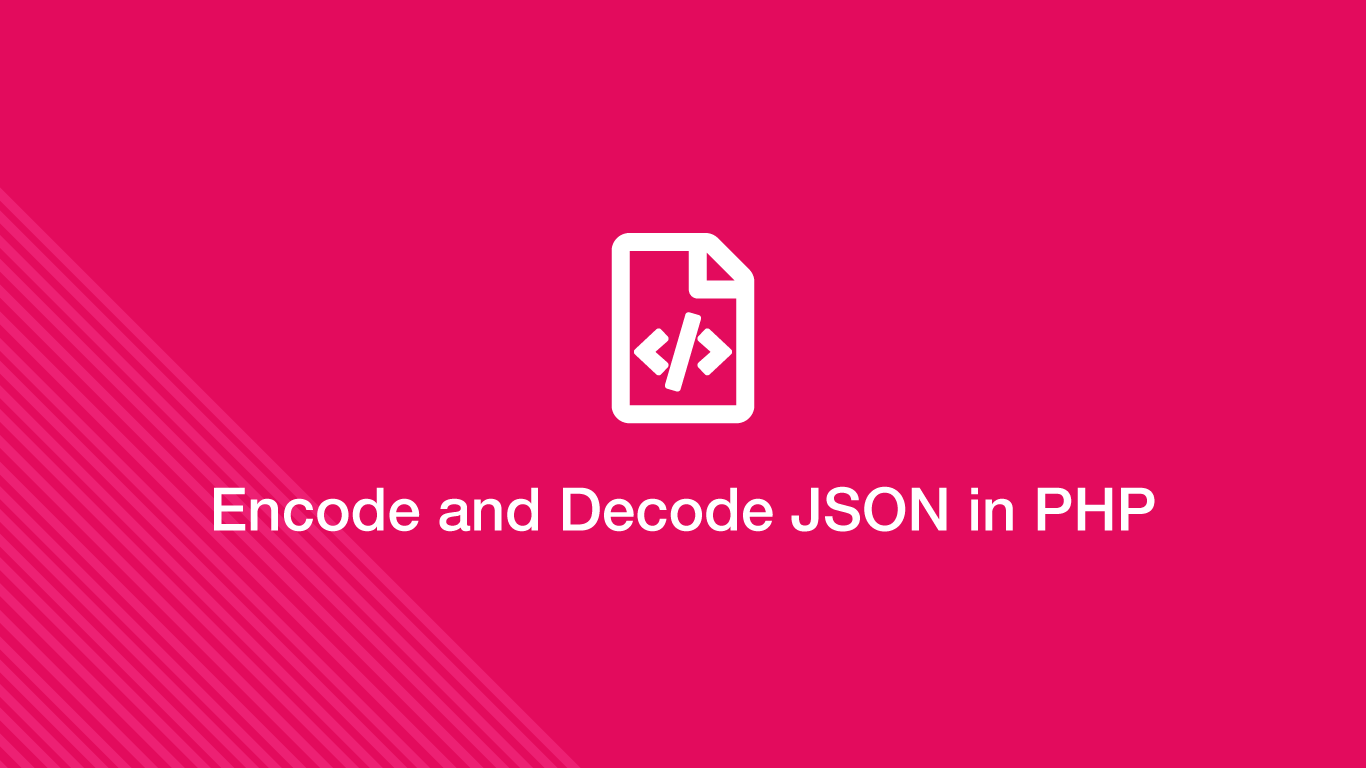
However, you can optionally specify the second parameter assoc, which accepts the boolean value that, when set as true, the JSON objects are decoded into the associative arrays.

To do an opposite conversion, PHP jsondecode () is used, but more on that later. Stripe events and their event objects your webhook endpoint needs to parse. To convert PHP objects into JSON, we use PHP jsonencode () function.
#Php json decode example how to#
We will see how to decode or convert a JSON object to a PHP object. Let's write a class called JsonCollectionStreamWriter that will help us with this.įirst, we need to open a file we're going to write to.Decoding JSON data is as simple as encoding it. What we want to be able to do is add items to the opened collection and close the collection when done.

Let's start with writing a JSON collection to a file using streams. To handle such large files in a memory-efficient way, we need to work with smaller chunks at a time. For now, we'll focus on storing those large collections of data in a JSON file and reading from it.įor our case, a JSON collection is a string containing a JSON array of objects (A LOT OF THEM), stored in a file. I'll write in detail about the whole import process in another post. Since the uploaded CSV is expected to have tens or even hundreds of thousands of rows, all of the operations need to be done in a memory-efficient way, otherwise, the app would break from running out of memory. If everything was fine, the mapped data from the first JSON file is converted into database records, which in this case span several connected tables.

There can be A LOT of validation errors for large CSV files. Validation errors are saved to different JSON file so they can be fetched later from the frontend without additional processing by the application. If there are any validation errors, we don't want to save anything to the database, we want to present all of the errors for each row. Finally, if there are no validation errors the data is read from the JSON file again and saved to the database. In the second step the JSON file is read and each item from the collection is validated against the defined rules.This allows us to not worry about parsing the data again in the following steps. Open the Network tab in the DevTools Right click (or Ctrl-click) a request Click Copy Copy as cURLCopy as cURL (bash) Paste it in the curl command. First, the CSV file is read, columns are mapped, and saved to a JSON file.to decode JSON data, view JSON data in hierarchy and show as jsondecode php. The import then goes through several stages: Best Online JSON Decode tool to decode JSON String. The user selects a CSV file, maps columns to supported fields so the app can tell what is what, and submits it.

Using PHP streams to encode and decode large JSON collectionsĪ while ago, I was working on a way to import large datasets in a hobby project of mine Biologer. To convert PHP objects into JSON, we use PHP jsonencode () function.


 0 kommentar(er)
0 kommentar(er)
